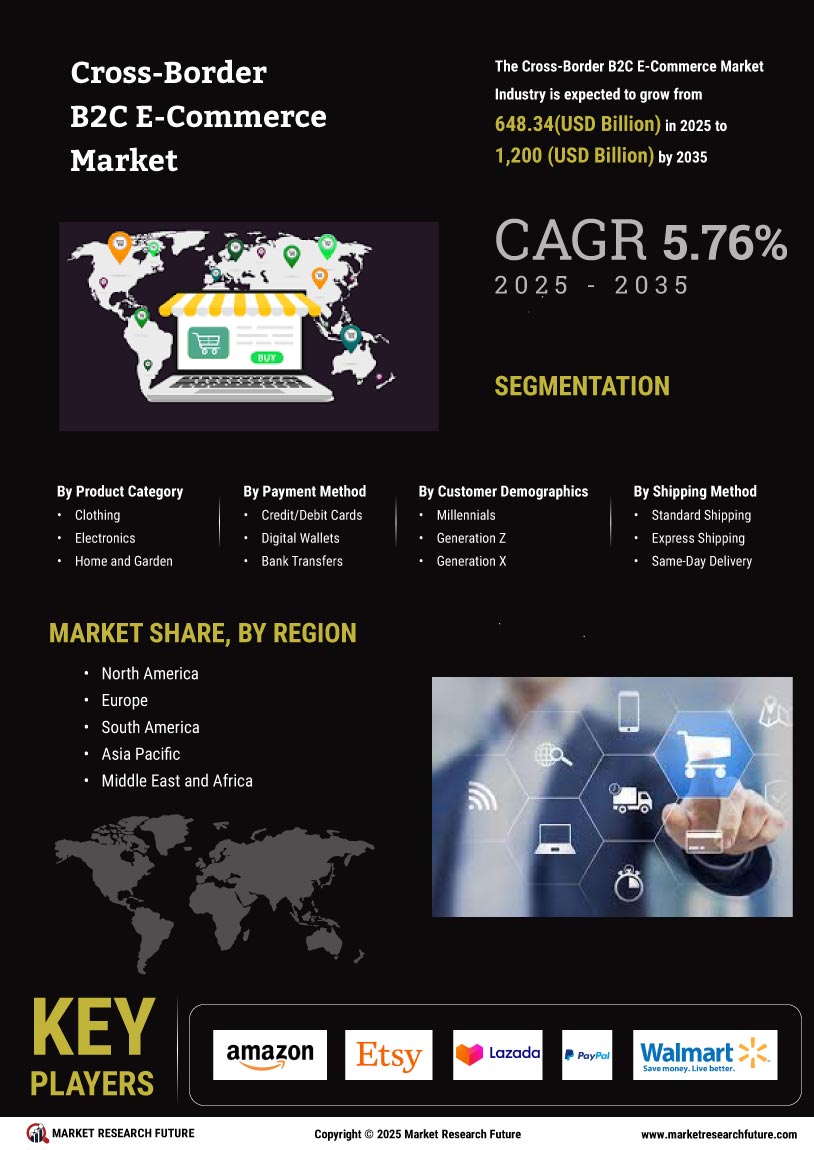Diverse Product Offerings
The Cross-Border B2C E-Commerce Market is characterized by an increasing variety of products available for international consumers. This diversity is driven by the ability of online platforms to showcase goods from different countries, allowing consumers to access unique items that may not be available locally. For instance, data suggests that consumers are increasingly seeking niche products, which has led to a rise in specialized e-commerce platforms catering to specific interests. This trend not only enhances consumer choice but also encourages cross-border shopping, as customers are motivated to explore international options for better quality or pricing. As a result, businesses in the Cross-Border B2C E-Commerce Market are likely to benefit from this expanding product landscape.
Influence of Mobile Commerce
The rise of mobile commerce is transforming the Cross-Border B2C E-Commerce Market. With the proliferation of smartphones, consumers are increasingly using mobile devices to shop online, including for cross-border purchases. Recent statistics reveal that mobile commerce accounts for over 50% of total e-commerce sales in several regions, highlighting its significance. This trend suggests that businesses must optimize their platforms for mobile users to capture this growing segment. Additionally, mobile payment solutions are becoming more prevalent, further facilitating cross-border transactions. As a result, the Cross-Border B2C E-Commerce Market is likely to see continued growth driven by the increasing reliance on mobile technology for shopping.
Increasing Internet Penetration
The expansion of internet access across various regions appears to be a pivotal driver for the Cross-Border B2C E-Commerce Market. As more individuals gain access to the internet, the potential customer base for cross-border transactions expands significantly. Recent data indicates that internet penetration rates have reached approximately 60% in many developing regions, facilitating a surge in online shopping behaviors. This trend is likely to continue, as improvements in infrastructure and affordability of devices further enhance connectivity. Consequently, businesses operating in the Cross-Border B2C E-Commerce Market may find new opportunities to engage with consumers who were previously unreachable, thereby driving sales and fostering international trade.
Growing Consumer Trust in Online Shopping
Consumer trust plays a vital role in the Cross-Border B2C E-Commerce Market. As online shopping becomes more prevalent, consumers are increasingly comfortable making purchases from international retailers. Factors contributing to this trust include improved payment security measures and transparent return policies. Data indicates that approximately 70% of consumers express confidence in online transactions, a significant increase from previous years. This growing trust is likely to encourage more individuals to engage in cross-border shopping, as they feel secure in their purchasing decisions. Consequently, businesses in the Cross-Border B2C E-Commerce Market may experience increased sales as consumer confidence continues to rise.
Enhanced Logistics and Supply Chain Solutions
Logistics and supply chain advancements are crucial for the Cross-Border B2C E-Commerce Market. Efficient shipping solutions and improved delivery times are increasingly important for consumers when making cross-border purchases. Recent developments in logistics technology, such as real-time tracking and automated warehousing, have streamlined operations, making it easier for businesses to manage international shipments. According to industry reports, the logistics sector has seen a growth rate of over 10% annually, indicating a robust investment in infrastructure. This enhancement in logistics capabilities not only reduces costs but also increases consumer confidence in cross-border transactions, thereby driving growth in the Cross-Border B2C E-Commerce Market.


















Leave a Comment